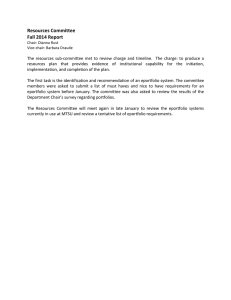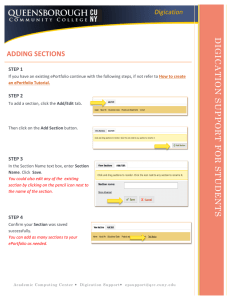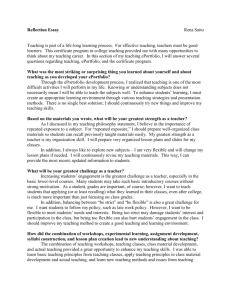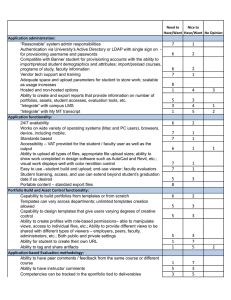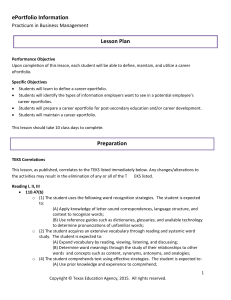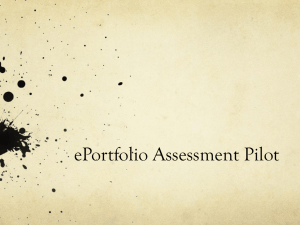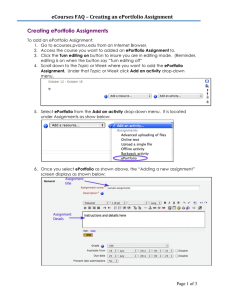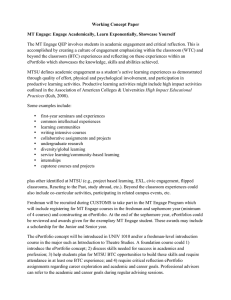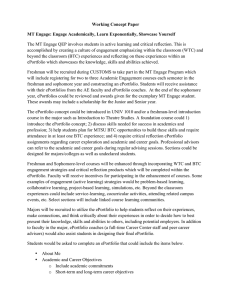A Few Lessons Learned from Creating a Sample Course Portfolio
advertisement
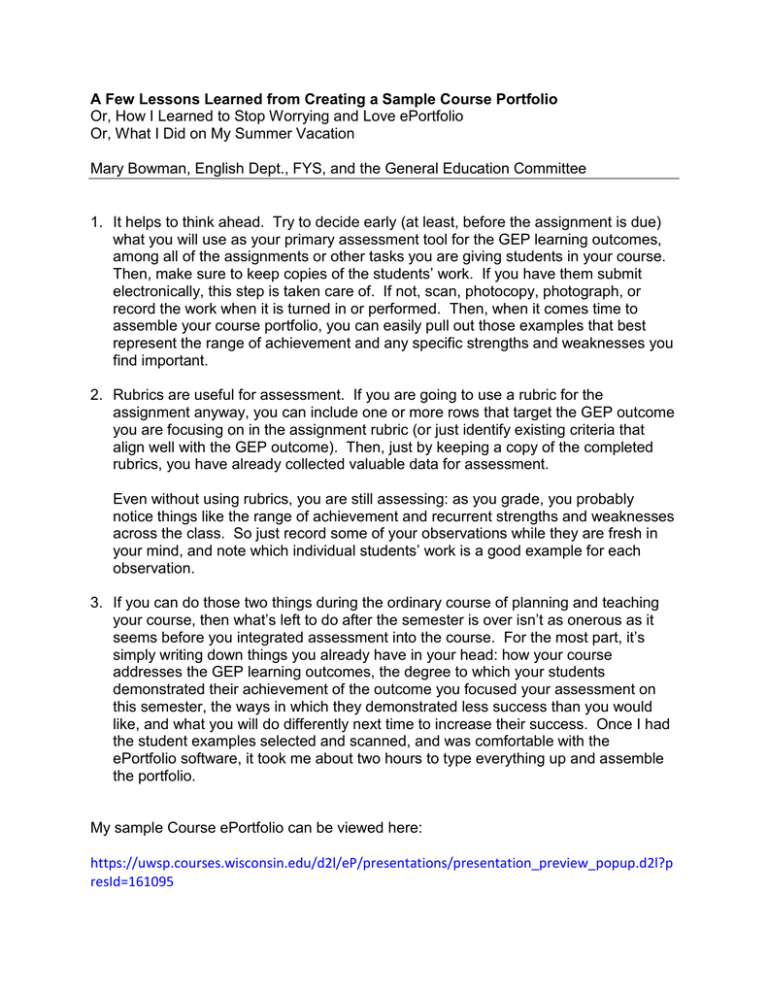
A Few Lessons Learned from Creating a Sample Course Portfolio Or, How I Learned to Stop Worrying and Love ePortfolio Or, What I Did on My Summer Vacation Mary Bowman, English Dept., FYS, and the General Education Committee 1. It helps to think ahead. Try to decide early (at least, before the assignment is due) what you will use as your primary assessment tool for the GEP learning outcomes, among all of the assignments or other tasks you are giving students in your course. Then, make sure to keep copies of the students’ work. If you have them submit electronically, this step is taken care of. If not, scan, photocopy, photograph, or record the work when it is turned in or performed. Then, when it comes time to assemble your course portfolio, you can easily pull out those examples that best represent the range of achievement and any specific strengths and weaknesses you find important. 2. Rubrics are useful for assessment. If you are going to use a rubric for the assignment anyway, you can include one or more rows that target the GEP outcome you are focusing on in the assignment rubric (or just identify existing criteria that align well with the GEP outcome). Then, just by keeping a copy of the completed rubrics, you have already collected valuable data for assessment. Even without using rubrics, you are still assessing: as you grade, you probably notice things like the range of achievement and recurrent strengths and weaknesses across the class. So just record some of your observations while they are fresh in your mind, and note which individual students’ work is a good example for each observation. 3. If you can do those two things during the ordinary course of planning and teaching your course, then what’s left to do after the semester is over isn’t as onerous as it seems before you integrated assessment into the course. For the most part, it’s simply writing down things you already have in your head: how your course addresses the GEP learning outcomes, the degree to which your students demonstrated their achievement of the outcome you focused your assessment on this semester, the ways in which they demonstrated less success than you would like, and what you will do differently next time to increase their success. Once I had the student examples selected and scanned, and was comfortable with the ePortfolio software, it took me about two hours to type everything up and assemble the portfolio. My sample Course ePortfolio can be viewed here: https://uwsp.courses.wisconsin.edu/d2l/eP/presentations/presentation_preview_popup.d2l?p resId=161095 This is what the front page of an ePortfolio might look like. A template will be made available to you before yours needs to be submitted, so all you need to do is add your materials to an existing structure. (This example was created from a first draft template, so what you see might not look exactly the same.) This is what the same page looks like when you are editing your ePortfolio:
